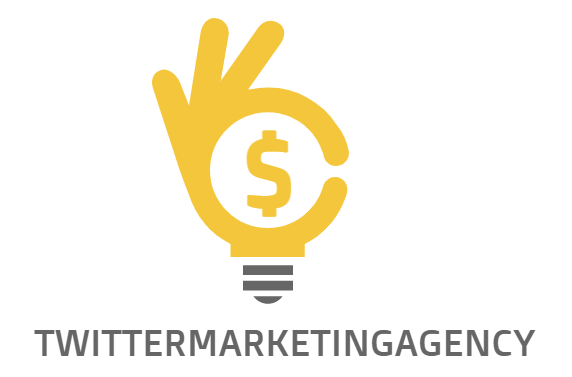There are big changes ahead for MTD for VAT. It will affect many more businesses as of April 2022.
As of that date, all businesses registered for VAT must use it.
This is true even if they’re below the VAT registration threshold (currently £85,000) and are voluntarily registered.
What does this mean? Put simply, the MTD for VAT rules say you must use compatible software for VAT accounting and keep VAT accounting records digitally.
This might feel like a big change. But it’s simply that the government wants to help businesses move into the digital age – with all the benefits that brings.
If you now need to follow the MTD for VAT rules then it’s the perfect opportunity to start taking advantage of the latest cloud accounting software for your tax accounts. Doing so will make your business much more efficient.
Here’s what we cover in this article:
Less time on taxes
Being more accurate
Going mobile
Using the latest technology
Final thoughts: Efficiency is just the start of it
Less time on taxes
According to the World Bank’s Doing Business project, the time spent preparing and paying taxes is rising for UK businesses.
In 2006, UK businesses spent 100 hours on their taxes, but by the time of the most recent survey (2019), this had risen to 114 hours.
You don’t have to be one of these businesses.
The solution is to use software for all of your accounting. If you do so, the VAT accounting is effectively done for you, making it easy to be compliant with Making Tax Digital for VAT.
For example, there’s no need to waste time manually tallying up VAT input or output amounts by flicking through paperwork (assuming you can even find it all), or by searching through spreadsheets.
Instead, the ledgers in your accounting software is automatically updated each and every time you issue an invoice, or create a purchase order.
This means that when it’s time for your quarterly or monthly VAT Return, it’s simply a matter of requesting the software to reconcile and prepare it – and then submitting it.
This is where MTD for VAT comes into its own, because the software connects directly to HMRC’s systems and submits it instantly. The records are then kept for the required amount of time (usually six years).
Alternatively, if you or your accountant must make any adjustments, these can be made with a few clicks before the VAT Return is reconciled and then submitted.
- Read Making Tax Digital checklist: How to ensure you’re ready for MTD for VAT in April 2022
Being more accurate
The UK government estimates that £12.3bn of VAT wasn’t paid in the tax year 2019/20 when it should have been.
This is down to a variety of reasons, but VAT errors are a large component.
Put simply, businesses sometimes get their VAT wrong.
With VAT being so complicated, it’s easy to miscalculate input and output tax. It’s very common for people to claim output tax they’re not allowed, for example, such as certain kinds of expenses.
Another common mistake is to put incorrect data into the six boxes of a VAT Return.
This can not only attract financial penalties from HMRC, but it mean extra work spent fixing the mistakes at a later date.
However, because you’ll be using software for your accounting due to MTD for VAT, your VAT accounting is likely to be more accurate.
There’s no magic involved here, of course. The accounting software can only be as accurate as the information you input.
But because accounting software tracks payments sent or received all the way through from start to finish, the chances of anything going wrong along the way are dramatically reduced, if not removed entirely.
As such, those times when you’re required to correct errors on previous VAT Return submissions, or risk penalties for getting it wrong, are also reduced.
Going mobile
In the first quarter of 2021, the Amazon Appstore showed a 108.98% increase in business apps.
By comparison, the second biggest-growing app category – social networking – grew by just 6.86% in the same period.
Businesses are starting to realise that using the mobile phone they carry for everyday tasks gives them a business advantage – and improves their efficiency.
The data is stored in the cloud, so is accessible beyond the four walls of the office.
This means you can access your accounting anywhere, and at any time. For example, you can chase up invoices while in the queue at a coffee shop.
You can even submit your VAT Return via your laptop while drinking the coffee, if you wish.
All you need is an internet connection.
Therefore, those periods when you have to sit down each evening or at the weekend to take care of business admin tasks are reduced.
There’s other benefits to a mobile-first approach for your accounting.
You’re always able to get a view of your cash flow, for example. You can see instantly how much you’re owed, and how much you owe.
This is available 24 hours a day, seven days a week.
Compare this to how some businesses still handle their accounting. They send all their paperwork to their accountant at tax return time, and that’s the only point at which they get true insight into the business’ financial position.
Having that knowledge always available right there in your pocket or bag means you can spot problems from a distance away – as well as have the agility to take advantage of opportunities.
Using the latest technology
The CBI estimates that £100bn could be unlocked by the UK economy by increasing business adoption of key technologies and management practices.
Using MTD-compatible accounting software is a key part of this.
But it’s wrong to think that accounting software is all the same.
If you’re making the move into accounting technology for your business, it really does pay dividends to go for the latest cloud software enabled with artificial intelligence in the form of machine learning.
It’s proving revolutionary in terms of delivering time and cost savings.
Those businesses that realise the value of this kind of technology are at a significant competitive advantage.
They’re the ones that are simply have fewer admin tasks, so have more time for the core revenue-generating activities.
Examples of technologies that give competitive advantages include invoice reconciliation, and automatic recognition of invoices and other paperwork.
Bank reconciliation is one of the most necessary but also time-consuming tasks.
It involves checking incoming payments against invoices, so you can see what’s been paid (or not).
Typically this requires human intervention to be able to match disparate details.
For example, does that £4,300 payment match invoice #299 or #320? Humans can look at the clues, such as the payee bank account, to work it out.
Increasingly, machine learning is able to replace this need for a human component. It can spot patterns and so recognise the same clues as humans.
Automatic data capture and recognition is similarly eye-opening. This lets you take a photo of things such as receipts or invoices using your phone.
Alternatively, you can scan it using a desktop PC.
The data is then recognised and inputted into your accounting automatically (for example, the amount, tax point date, and the VAT rate and amount).
Used to throwing receipts into a box or a bag, and then going through them across a miserable day or two when it’s time to work out your taxes?
Now there’s no need.
The time savings have been measured in entire weeks.
Final thoughts: Efficiency is just the start of it
Starting to follow the MTD for VAT rules might feel onerous.
But it’s a once-in-a-lifetime opportunity for many businesses to simply do things better by digitalising their business.
Using technology for MTD for VAT means you’re more efficient, and you thereby save money – not to mention having time to be able to do more of what you love.
More than this, however, is the fact that you might be at a disadvantage if your competitors are already using technology.
Making good use of tech really does give you an edge and can make all the difference between growth in your business, and standing still.
Editor’s note: This article was first published in September 2021 and has been updated for relevance.
The ultimate guide to Making Tax Digital
Need help getting ready for Making Tax Digital? Download this free guide to learn about MTD for VAT, Income Tax and Corporation Tax, and what they mean for your business.
Get your free guide
27,023 readers have downloaded this guide
27,023 readers have downloaded this guide
The post How MTD for VAT means your business can tame tax appeared first on Sage Advice United Kingdom.


